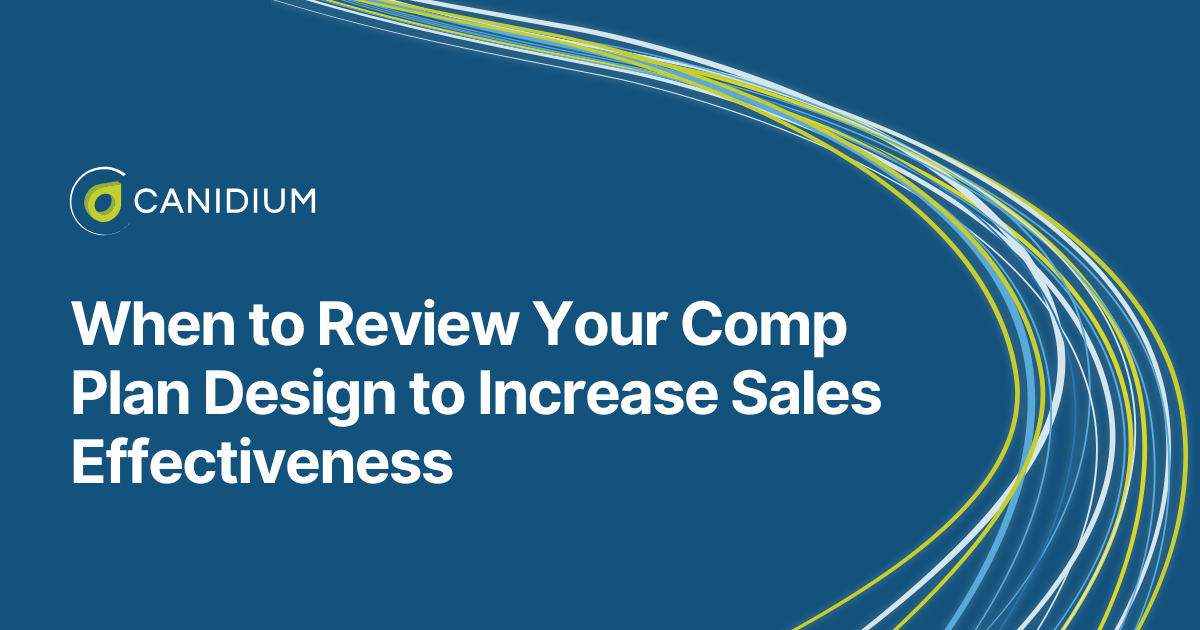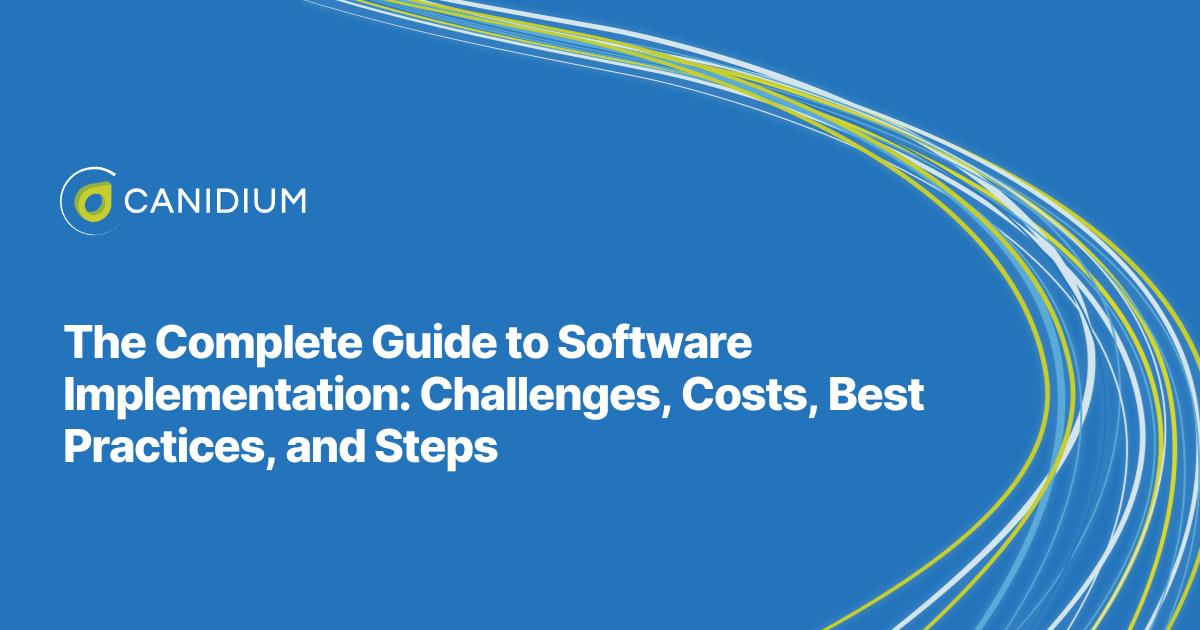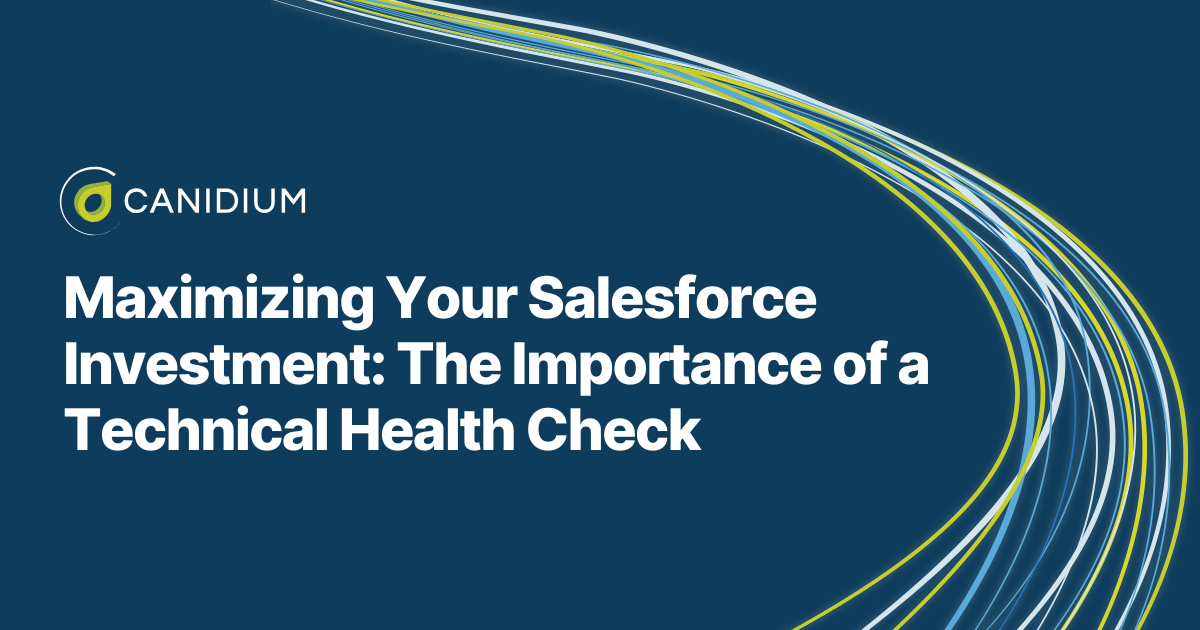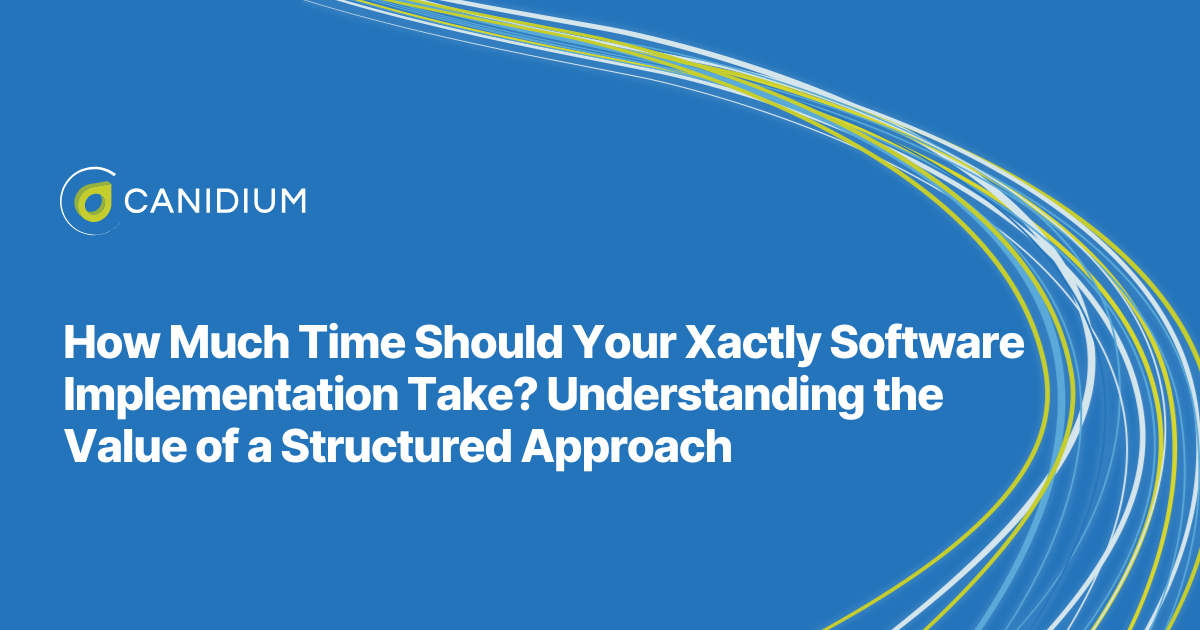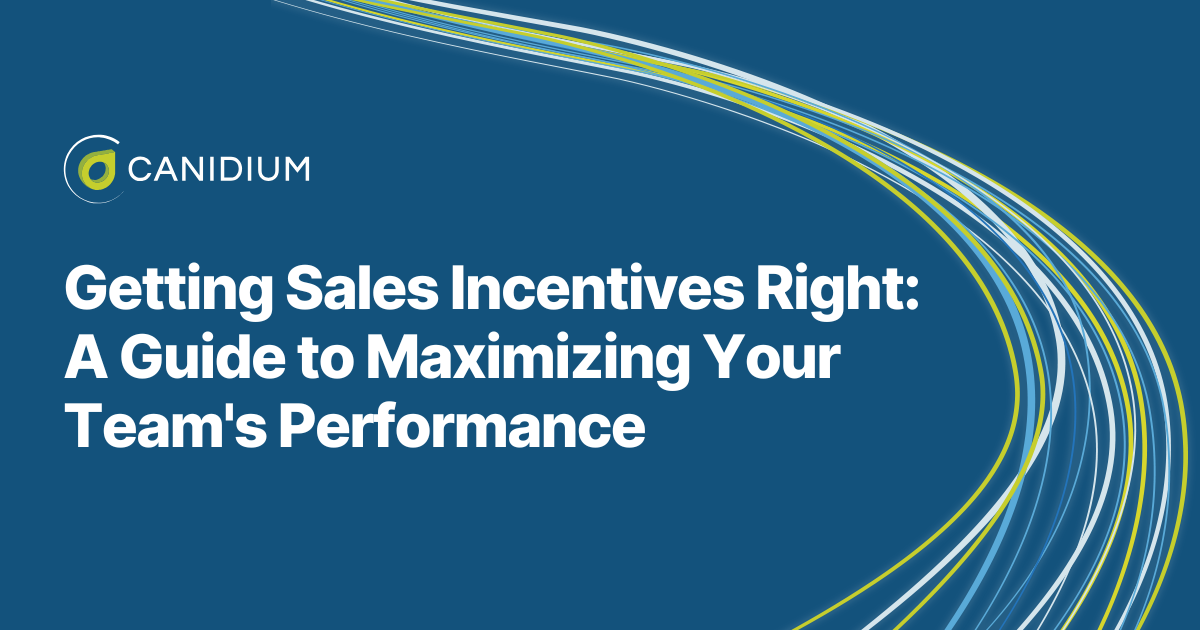Are your sales reps operating at their maximum potential? If your comp plan design does not motivate and incentivize sales team effectiveness, you are leaving money on the table. In fact, you might also be actively losing money through increased administrative and hiring costs. Unrealistic sales targets and uncompetitive compensation plans are two of the leading reasons your sales team professionals may want to leave their jobs right now.
Reviewing your comp plan design is a vital component of fostering revenue growth. The more granular and strategic your process is, the higher your sales team's performance.
At Canidium, our sales incentive compensation management experts help enterprise organizations develop and configure tailored solutions to commission challenges and employee retention. We optimize the comp plan review process by focusing on the following critical components of designing sales effectiveness.
- Timing Your Comp Plan Design Review Around Business Processes
- Understanding Compensation Plan Design Factors That Impact Sales Effectiveness
- Increasing Sales Effectiveness With Strategic Sales Compensation Plan Design
- Leveraging AI to Increase Sales Effectiveness And Turn Data Into Actionable Information
Timing Your Comp Plan Design Review Around Business Processes
There is no universal way to time your comp plan design review. Your organization's sales cycles, operational considerations, sales performance, and external market factors all play into your timing. However, there are three prominent ways to time a comp plan design review:

Annual Comp Plan Design Review
Most organizations conduct an annual review of their compensation plans, timing the process in accordance with the financial year. Ideally, reviews and any resulting changes are implemented a quarter before the financial year ends. This timing allows for the new compensation plans to start in alignment with the new financial year, providing a clean slate and straightforward transition for financial planning and performance assessments. With this goal in mind, annual sales compensation program design reviews should start far enough in advance to process the feedback from account executives and strategically assess the effectiveness of the current compensation structure from the ground up before the final quarter of the financial year.
Seasonal Sales Incentive Plans
Beyond the annual review, organizations might also adjust their compensation plans or introduce short-term incentives based on seasonal sales needs or specific campaigns. For instance, retail companies may implement short-term incentives during gift-giving holidays to boost sales team productivity and ultimately, top-line revenue. Timing commission rates and incentive structure reviews for these types of sales volume fluctuations depends on when your seasonal sales opportunity is, or the date of your campaign.
As Needed Reviews For Sales Effectiveness
Finally, there may be additional times throughout the year when it makes sense to review and possibly adjust compensation plans. Examples include significant product launches, changes in the market that affect product sales, or strategic shifts within the company that might necessitate a different approach to compensation programs. These ad hoc reviews can help sales managers tip the scales to meet sales quotas during slow periods. Alternatively, they can push sales teams to increase their average deal sizes or improve their conversion rates.
Understanding Compensation Plan Design Factors That Impact Sales Effectiveness
Compensation plans are a critical element in attracting, retaining, and motivating talent within an organization. Designing an effective comp plan requires careful consideration of the following three factors that influence employee satisfaction and organizational performance.

1. Market Changes and Industry Trends
Market dynamics and industry trends play a significant role in shaping compensation strategies. Organizations must stay attuned to economic shifts such as inflation, labor supply and demand, and prevailing wage rates. For instance, during economic downturns, your company may need to be cautious with salary increases and bonuses, while during a booming economy, competitive compensation packages become even more critical.
It's essential that compensation plans are responsive to external market changes. Regular market analyses can inform decisions around timing for salary adjustments or the introduction of new benefits. Additionally, adopting a flexible framework allows businesses to promptly react to talent shortages, new industry standards, and technological advancements that may impact job roles and expectations.
2. Employee Lifecycle and Retention
Compensation plans should be crafted to adapt to an employee’s lifecycle within your organization. This means recognizing and responding to various career stages—from onboarding new hires to nurturing established employees nearing retirement. For instance, entry-level positions may benefit from incentive-focused compensation that encourages performance, while seasoned employees might value stability and comprehensive benefits.
Certain career milestones, such as promotions, significant skill development, or transitions into leadership roles, are key moments to revisit and tailor compensation plans. Consider implementing pay reviews coinciding with these transitions to reinforce the value placed on employee progression and to maintain engagement. Additionally, offering retention bonuses during pivotal life cycles can enhance loyalty and reduce turnover.
3. Performance Management Cycles
An effective compensation plan should closely align with your organization's performance management cycle. By synchronizing salary revisions and incentive payouts with performance evaluations, you can ensure that compensation reflects employee contributions and organizational goals. This alignment reinforces a culture of accountability and encourages high performance.
In order to effectively connect performance with compensation, it’s important to maintain ongoing communication with employees. Regular feedback sessions can help clarify expectations, while also providing opportunities to discuss career aspirations and any necessary shifts in compensation to match performance metrics. This transparency cultivates trust and engagement among employees.
Increasing Sales Effectiveness With Strategic Sales Compensation Plan Design
To get the best sales outcomes out of your review process, you may need to take a strategic approach. Here are a few key steps and strategies to implement during your comp plan design review to increase sales effectiveness:
Understanding the Need for Change
.png?width=1920&height=1080&name=Step%20by%20Step%20Process%20Chart%20Visual%20Charts%20Presentation%20in%20Blue%20Black%20Teal%20Simple%20Style%20(1).png)
- Organizational Goals Alignment: The primary driver for reassessing compensation plans should always be alignment with your business goals. Whether it's growth, restructuring, or expanding market share, ensure that your compensation strategy supports these goals effectively.
- Market Competitiveness: Regularly benchmarking compensation against industry standards is crucial. This helps you attract and retain top talent by ensuring that pay scales and benefits are competitive with what the market offers.
- Employee Performance and Satisfaction: Compensation plans should be structured to motivate employees and reward high performance. Consider employee feedback and satisfaction surveys to gauge how well your current compensation plan is received. In particular, you should ensure account executives provide input on the plan design. This firsthand input helps to gauge the effectiveness of current compensation plans and provides insights into how these plans are perceived by those directly affected.
- Enhance Transparency: Improve communication around how compensation decisions are made and how plans are performing. This transparency can increase trust and buy-in from employees, making them more receptive to changes and more engaged in the process.
Recommended Strategies for Revising Compensation Plans to Increase Sales Effectiveness
.png?width=1920&height=1080&name=Step%20by%20Step%20Process%20Chart%20Visual%20Charts%20Presentation%20in%20Blue%20Black%20Teal%20Simple%20Style%20(2).png)
- Comprehensive Data Analysis: Utilize data analytics to assess the effectiveness of your current compensation plan. Analyze trends in employee performance, turnover rates, and the impact of existing incentives on employee behavior. Although, not all organizations are currently utilizing these tools to their full potential. In fact, 70% of companies are still using spreadsheets for sales compensation plan design. This means many companies still have a significant opportunity to leverage ICM software to analyze performance data and refine compensation for sales productivity accordingly.
- Inclusive Planning Process: Beyond your account executives and sales managers, involve a wide range of stakeholders in the redesign process. This includes HR professionals and department heads to ensure that the plan is comprehensive and considers diverse perspectives.
- Phased Implementation: Roll out changes in phases to minimize disruptions and allow time for adjustments. This approach allows you to test different aspects of the new compensation design before full implementation.
- Develop Scalable Processes: As your organization grows, the processes for reviewing and updating compensation plans should scale accordingly. This might involve more sophisticated software tools, larger teams, or more segmented approaches, depending on the size and diversity of your workforce.
Leveraging AI to Increase Sales Effectiveness And Turn Data Into Actionable Information
One of the most important strategies in comp plan design comes in the form of new technology. For instance, tools like SAP's SuccessFactors Incentive Management (SFIM), allow enterprise level organizations to pull reports that highlight sales effectiveness metrics, and allow for more targeted and impactful sales commissions and incentive structures. This makes it possible to turn data into actionable information.
Software solutions that leverage AI and embedded analytics can provide profound insights into how effective current compensation strategies are, aligning them more closely with actual sales performance and broader business objectives. The predictive capabilities of AI allow for modeling the outcomes of potential changes to compensation plans before they are implemented, enabling organizations to make informed, data-driven decisions. Furthermore, AI facilitates real-time adjustments in compensation plans, offering suggestions for modifications based on ongoing results and changing market conditions.
Alternatively, you can also analyze compensation plans and sales effectiveness using a scatter graph without AI. This process requires collecting and preparing robust sales and compensation data. From there, you can choose key variables, such as total compensation and sales performance, for analysis, creating a scatter graph where each data point represents an individual record.
Analyze the graph to identify patterns, outliers, and the correlation between pay and performance by adding a trend line and calculating the correlation coefficient. Use these insights to inform strategic decisions about your compensation plan. Regularly update and review the scatter graph with new data to monitor trends and adjust strategies accordingly.
Regardless of whether you opt for AI or not, you will need an expert to prepare your incentive compensation system for enhanced performance tracking. Most organizations work with a software implementation (SI) partner to configure their analytics and reporting system and establish their data storage and collection processes.
Improving Sales Metrics With Effective Sales Compensation Plans
Strategically, organizations should focus on aligning compensation plans with business goals, maintaining market competitiveness, and ensuring employee satisfaction. Incorporating a comprehensive data analysis involving a broad spectrum of stakeholders in the planning process and implementing changes in phases can further refine this process.
Advanced tools such as AI and analytics offer valuable insights by predicting outcomes and suggesting real-time adjustments, enhancing overall sales effectiveness. However, organizations can still achieve meaningful insights without AI with methods like scatter graphs, ensuring continuous adaptation and refinement of compensation strategies to meet evolving business needs. Either way, working with a software implementation partner to develop your comp plan design review system is the first step.
Read more about how to choose the best software implementation partner for your project here.


